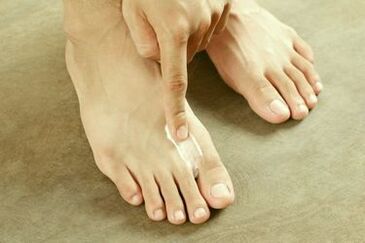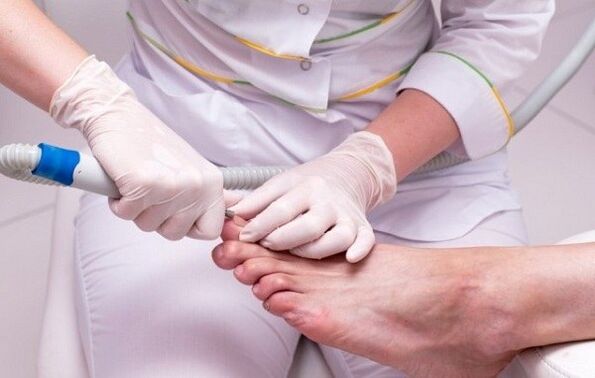Nail fungus or onychomycosis is an unpleasant disease that cannot be immediately distinguished.The fungus destroys your nail plate, causing discomfort and pain;If treatment is started for onychomycosis, it can lead to soft tissue pathologies.The fungus can easily spread to healthy nails or toenails, posing a major threat to your health and the health of others.
If you have any doubts about the health of your nails, it is best to make an appointment with a dermatologist.Only complex treatment, medication, regular foot hygiene and special treatment of nail plates, treatment will bring a positive result.

The main symptoms of fungal infections:
- Brittle, rough nails
- Deformation of the nail plate
- The presence of inflamed tissue around the nail
- Delamination, thickening or thinning of the nail plate
- The presence of brown, black or yellow areas on the nail.
How do you get nail fungus?
Ways of infection with onychomycoosis.If you follow the rules of hygiene, have good immunity and a healthy and well-groomed skin, the risk of a fungal infection is low.Fungi often enter the body through abrasions, cuts, cracks, and damaged areas of nails and skin.Excessive sweating or dry skin or wearing tight shoes can contribute to fungal growth.
You are more susceptible to nail fungus:
- Do you have varicose veins?
- Immunity decreased
- You wear non-breathable rubber shoes
- There are endocrine and vascular diseases
- They came into contact with a person infected with the fungus
- There are flat feet.
What danger does nail fungus pose to people?
In an advanced stage of onychomycosis, nail fungus causes an allergic reaction, has an intoxicating effect on the body, and can affect internal organs.
How to treat nail fungus?
When treating nail fungus, local drugs can be used - creams, ointments, patches, can also be used at home.There are various spray options available that have strong antifungal, anti-inflammatory and antiseptic properties.
In the early stage of the disease, the use of sprays or creams is recommended. Remember that nail fungus treatment consists only in getting rid of external manifestations. During the treatment, the dermatologist prescribes systemic drugs.The drug can be prescribed in the form of tablets to be taken for a course of three to six months.

The most common mistakes when treating mushrooms
The moisture of your feet. Fungi in the form of spores are everywhere everywhere.When the humidity of the skin exceeds 80%, fungal spores begin to multiply on the nail plate and the surrounding skin.
The presence of fungal spores on objects.When ironing socks with steam, you kill the active fungal spores that remain there.If this is not done, then from the spores, the participation of the wet skin of the foot (favorable environment), in the high humidity of the shoes, fungi begin to multiply actively.
Shoe hygiene.When starting treatment for toenail fungus, be sure to treat all the shoes you wear.Use an individual towel designed for feet only.
Remains of fungal spores on tools. All tools for cutting nails must be treated with disinfectant solutions;It is recommended to use disposable files to care for affected nails.If fungal spores remain on the tools, you can remove them by hand for years, cut the traces of fungi with your fingernail, but this will not give any results.
What should you do when treating fungus gnats?
If you do not follow the recommendations during the treatment of nail fungus, a relapse may occur.Always try to keep your feet clean and change your socks daily.It is important that your feet wear the right shoes to prevent sweaty feet.After taking any water procedure, dry your toes, paying special attention between the toes.
Use an individual foot towel that should be dried after use.If your shoes get wet, dry them immediately.During treatment, it is recommended to change closed shoes at least twice a year.Foot baths with soda and salt will also be useful.Feet should be washed daily using laundry or tar soap.
Always follow hygiene rules when visiting public places: saunas, baths, baths, swimming pools.It is not medical in itself;So that you can quickly get rid of nail fungus and save your time and nerves, it would be good to contact a dermatologist who will prescribe a course of treatment for you.























